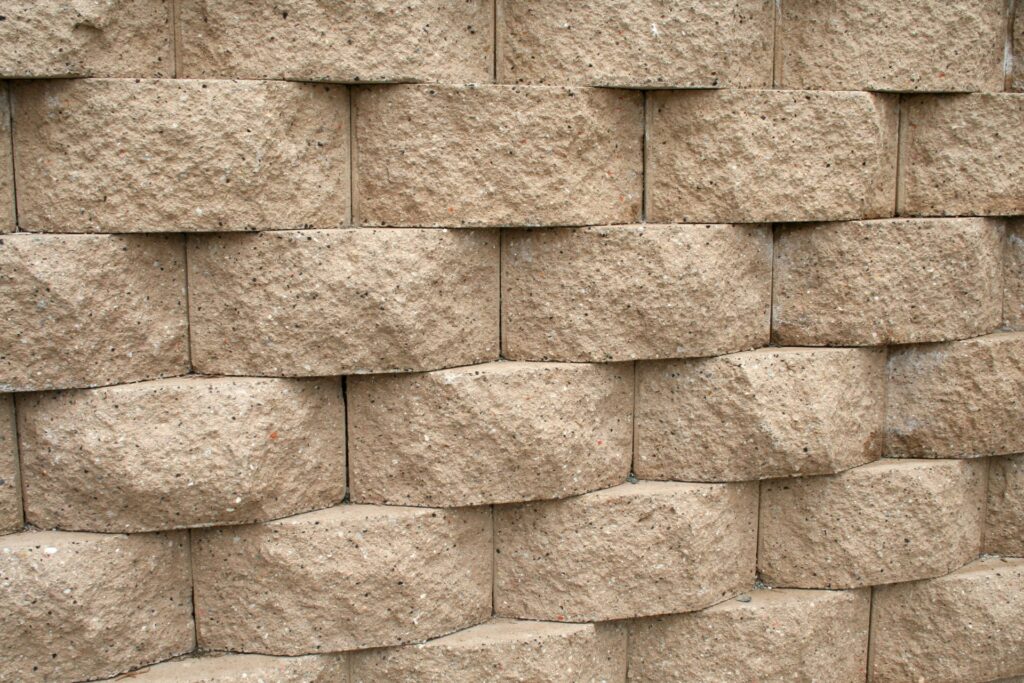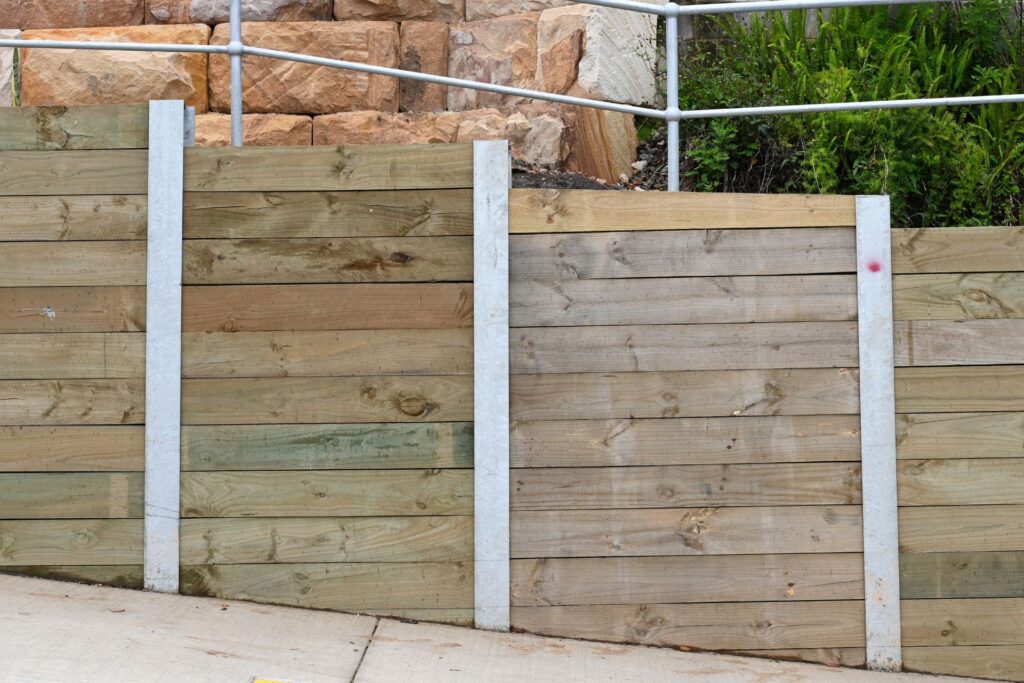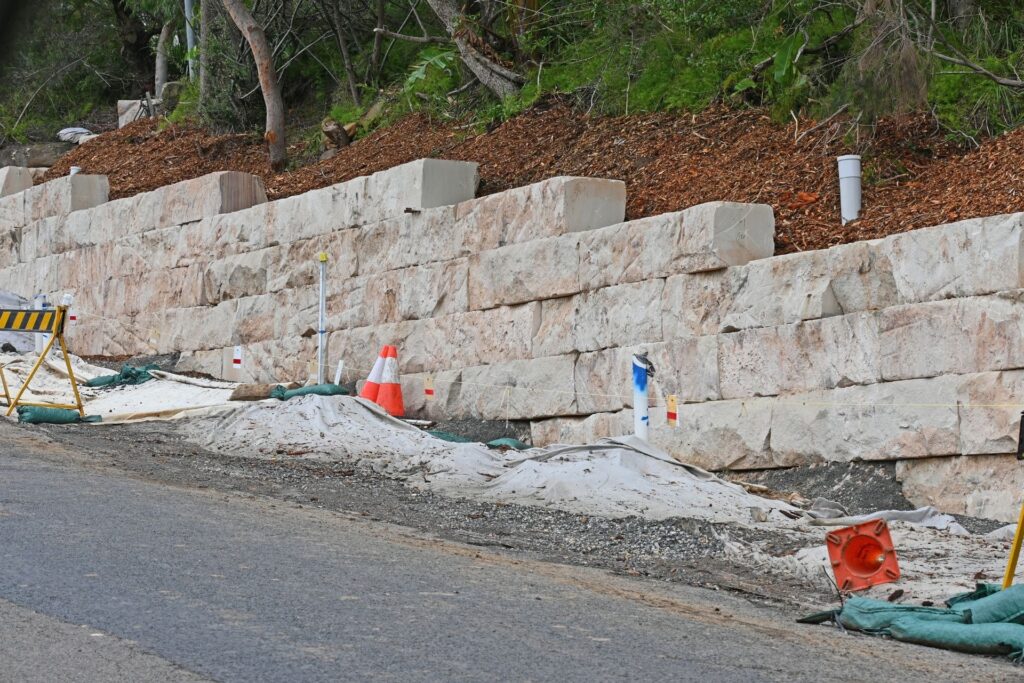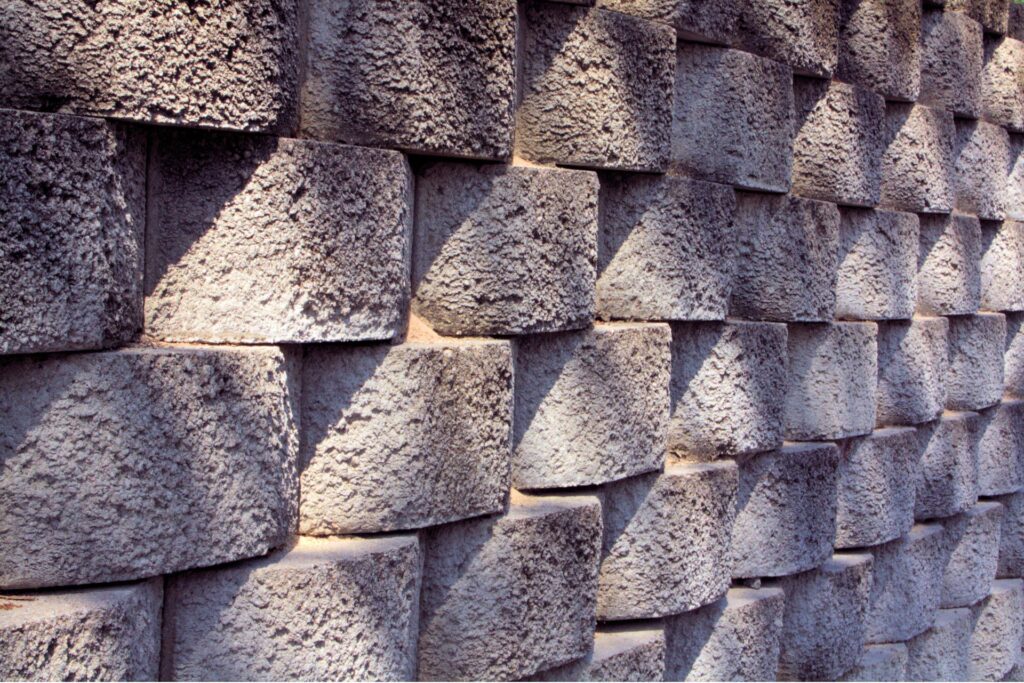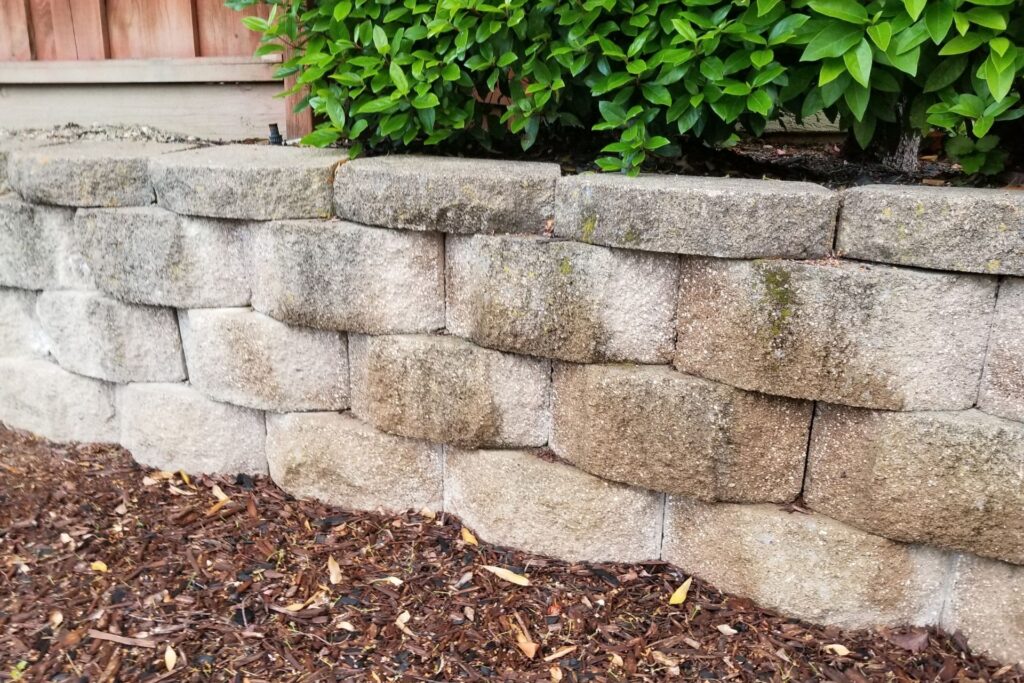Welcome to our comprehensive guide on retaining wall regulations in New Zealand. Whether you’re a homeowner looking to enhance your property or a DIY enthusiast embarking on a landscaping project, understanding the rules around retaining walls is crucial. Retaining walls plays an important role in managing soil, preventing erosion, and improving the safety and aesthetics of outdoor spaces. However, building one without following proper regulations can lead to safety hazards, costly fines, and structural issues. In this post, we’ll break down everything you need to know about retaining wall regulations in NZ, ensuring that your project is compliant, safe, and successful.
In New Zealand, retaining walls over 1.5 meters in height or those supporting additional loads (such as driveways or buildings) generally require building consent. Local council regulations may vary, so you must check specific requirements in your area. Proper drainage, stability, and construction materials must comply with the New Zealand Building Code to ensure safety and prevent structural failure. Always consult a professional engineer or local council for guidance before starting your retaining wall project.
Table of Contents
What Is A Retaining Wall?
A retaining wall is a structural feature designed to support soil at different levels on either side, preventing it from eroding or sliding down a slope. Retaining walls are typically used in landscaping or construction projects where there’s a need to manage ground elevation changes. Their primary function is to stabilize slopes and prevent soil erosion, especially in areas where uneven terrain could pose a risk to structures, gardens, or roads.
In New Zealand, retaining walls play a particularly important role due to the country’s diverse and often steep terrain. Many parts of the country, especially in hilly and mountainous regions, require these structures to manage land slopes effectively and ensure that properties remain safe and functional. With New Zealand’s frequent rain and seismic activity, retaining walls are also essential for managing water runoff and stabilizing soil that could otherwise be displaced by natural forces.
The most commonly used materials for constructing retaining walls in New Zealand include:
- Concrete: Durable and strong, concrete is often chosen for its longevity and resistance to weathering, making it a popular choice for larger or commercial retaining walls.
- Timber: Treated timber is commonly used for smaller residential retaining walls, offering a more natural look that blends with the surrounding environment.
- Stone: Stone or rock retaining walls provide an aesthetically pleasing, natural appearance. They are particularly popular in areas where the natural landscape is a key design element.
Retaining walls in New Zealand are not just practical; they are often a necessity due to the country’s unique landscape. Whether it’s for residential, agricultural, or commercial purposes, retaining walls help manage the challenges posed by New Zealand’s hills, slopes, and weather patterns.

Why Do Retaining Wall Regulations Exist?
Retaining wall regulations are put in place to protect both properties and lives. These walls play a critical role in managing soil and land stability, especially in areas with uneven terrain or where construction alters natural landscapes. Without proper oversight, poorly constructed retaining walls can lead to severe consequences, such as landslides, property damage, and even injury.
One of the biggest concerns with retaining walls is their potential to fail when not built correctly. When a wall collapses, it can trigger landslides, causing soil and debris to flow uncontrollably downhill. This type of failure can damage homes, roads, and other structures, creating a ripple effect that leads to costly repairs and dangerous living conditions. Additionally, retaining wall collapses can result in the loss of valuable land, particularly in sloped areas, as the unsupported soil erodes over time.
Regulations are vital to ensuring that retaining walls are structurally sound, taking into account various factors such as the height of the wall, the type of soil, drainage needs, and the amount of pressure the wall must withstand. These standards are designed to protect not just the property where the wall is located, but also neighboring properties and public areas that could be affected if the wall were to fail.
In New Zealand, retaining wall regulations is particularly crucial due to the country’s unique environmental challenges. The high level of rainfall in many regions, combined with New Zealand’s earthquake-prone landscape, means that retaining walls must be designed to handle extreme conditions. Heavy rain can saturate the soil, increasing its weight and the pressure on retaining walls. If walls are not properly built with adequate drainage, this water buildup can cause the wall to collapse. Earthquakes, on the other hand, add another layer of complexity, as walls must be able to withstand the ground shaking without failing.
Because of these environmental factors, New Zealand’s regulations ensure that retaining walls are engineered to cope with the forces of nature, safeguarding properties and communities. By adhering to these regulations, homeowners and developers can prevent costly damages, reduce the risk of injury, and maintain the long-term stability of the land.

When Do You Need Building Consent For A Retaining Wall In NZ?
When considering building a retaining wall in New Zealand, it’s crucial to understand the rules and regulations set out by the New Zealand Building Act. These laws are designed to ensure the safety and integrity of construction projects, particularly those involving structural support like retaining walls.
A retaining wall is generally used to hold or prevent soil and land from shifting, which can have significant safety implications if not built correctly. This is where building consent comes into play. The New Zealand Building Act outlines when you must obtain consent for a retaining wall, based on height, the structure it supports, and any additional load it may carry. Here’s a breakdown of the key considerations:
Key Points
1. Height Restrictions
In most cases, a retaining wall exceeding 1.5 meters in height will require building consent. This is a general rule of thumb across New Zealand. The height limit is crucial because taller retaining walls are exposed to more pressure from the land they are holding back, making the construction process more complex and potentially hazardous.
2. Additional Loads and Structural Support
Even if the retaining wall is less than 1.5 meters, you may still need building consent if it’s supporting additional loads. For example, if there’s a driveway, building, or any other structure placed above or near the wall, this can increase the stress on the wall and may necessitate an engineering review and approval. The same applies to walls supporting other load-bearing structures.
3. Regional Differences
Local councils may have specific requirements that go beyond the 1.5-meter guideline. Some areas might require consent for retaining lower walls, depending on the terrain, soil conditions, and environmental concerns. It’s always a good idea to check with your local council to understand any regional rules that could impact your project.
Exceptions and Special Circumstances
In some situations, building consent may not be required, even if the retaining wall is over 1.5 meters. For instance, certain types of retaining walls made from modular blocks or temporary structures for landscaping purposes may fall outside the standard regulations. Additionally, rural properties that are not near public areas may have more relaxed requirements, though this varies from one council to another.
Tips for Contacting Local Councils
If you’re unsure whether your retaining wall needs building consent, the best approach is to contact your local council directly. They can provide you with detailed advice and specific regulations for your area. Here are some tips for reaching out:
- Prepare Detailed Information: Before contacting the council, have all the relevant information ready, such as the proposed height, materials, location, and purpose of the retaining wall. This helps the council give you accurate guidance.
- Ask for Clarification: If there are any rules or requirements you’re uncertain about, don’t hesitate to ask for further clarification. Councils are there to help you understand what is needed to meet building codes and ensure the safety of your construction.
- Consider Professional Advice: In some cases, getting advice from a structural engineer or professional builder can save time. They can provide insight into whether consent is required and ensure your retaining wall complies with local regulations.
By following these guidelines and staying informed about the specific rules in your area, you can ensure your retaining wall project meets legal requirements, avoids unnecessary complications, and stands the test of time.

Local Council Regulations And How They Vary
When planning any project or dealing with property-related matters in New Zealand, understanding local council regulations is crucial. What many people may not realize is that these regulations can differ significantly depending on the region. For instance, the rules and requirements set by the Auckland Council may not always align with those in Wellington or other parts of the country. This variation stems from the fact that local councils have the authority to set regulations specific to their area, influenced by factors such as local environmental conditions, community needs, and urban development goals.
Take Auckland and Wellington as examples. Auckland, being a larger and rapidly growing city, might have stricter zoning rules or more specific guidelines around housing density due to its urban planning needs. Wellington, with its unique landscape and seismic considerations, may have different building code requirements. These differences mean that property owners and developers need to be particularly careful in ensuring they are compliant with the specific rules of the area they are working in.
To avoid any potential issues, it’s always a good idea to contact your local council directly for the most up-to-date and accurate information. Whether you’re planning to build, renovate, or simply understand the property requirements, your local council is your best resource. Most councils offer detailed information and tools to help you determine specific requirements.
By checking with your local council, you’ll ensure that your project runs smoothly and stays compliant with all necessary regulations, avoiding costly delays or penalties down the line.

Building Code Requirements For Retaining Walls In NZ
Retaining walls play a critical role in stabilizing sloped land, preventing soil erosion, and ensuring that landscapes remain safe and functional. In New Zealand, retaining walls are subject to specific building code requirements to ensure they are both safe and structurally sound. Understanding these requirements is essential for homeowners and builders alike, as they help prevent potential hazards like wall collapse or drainage issues.
The New Zealand Building Code and Retaining Walls
The New Zealand Building Code sets out the minimum standards for all building work, including retaining walls, to protect the health, safety, and durability of buildings. Under the Building Code, retaining walls that are higher than 1.5 meters, or those that support a surcharge (such as a road, driveway, or building), require building consent. The code is designed to ensure that all retaining walls are capable of withstanding the loads they may be subjected to, including soil pressure and additional external forces.
Key Code Requirements for Retaining Walls
1. Design and Construction Standards: Retaining walls must be designed and constructed to maintain stability over time, considering the nature of the soil, the slope of the land, and any external loads that may apply. The Building Code mandates that these walls be designed following AS/NZS 1170.0:2002 and AS/NZS 1170.1:2002 standards, which deal with structural design and load-bearing capabilities.
2. Drainage: One of the most critical aspects of building a retaining wall is ensuring proper drainage. Water buildup behind a retaining wall can lead to increased pressure on the structure, potentially causing failure. The Building Code requires retaining walls to have adequate drainage systems in place, including the use of drainage pipes and gravel backfill to allow water to escape.
3. Materials: The Building Code specifies that retaining walls should be built with durable, weather-resistant materials. Common materials include treated timber, concrete blocks, and natural stone. Each material has its specific design and construction guidelines to ensure long-term durability.
The Role of Engineers and Licensed Builders
For retaining walls that require consent, a qualified engineer must be involved in the design process. Engineers assess factors such as soil type, wall height, load conditions, and drainage requirements to create a design that complies with the Building Code. Licensed builders, who are familiar with the code requirements, ensure that the retaining wall is constructed correctly and meets all regulatory standards.
Practical Tips for Homeowners
When hiring a professional to build a retaining wall, homeowners should consider the following:
1. Check for Qualifications: Ensure that the engineer or builder is licensed and experienced in retaining wall construction. Ask for references or examples of previous work.
2. Understand the Design: Request a clear explanation of the wall’s design, including how drainage will be handled and what materials will be used.
3. Confirm Compliance: Make sure that the design and construction plans comply with the New Zealand Building Code. If the wall requires building consent, verify that the consent is in place before work begins.
By understanding the building code requirements and working with qualified professionals, homeowners can ensure that their retaining walls are safe, compliant, and built to last.

What Happens If You Don’t Follow The Regulations?
Building a retaining wall without adhering to local regulations or securing the necessary permits can lead to a range of serious consequences, some of which can be both financially and legally burdensome. Here’s a detailed look at the potential repercussions:
Legal and Financial Penalties
When you fail to obtain the required permits or don’t comply with building codes, you may face significant penalties. These can include hefty fines imposed by local authorities. In some cases, the municipality might order the removal or modification of the non-compliant structure, leading to additional costs for demolition and reconstruction.
Not only can these penalties be expensive, but they can also delay your project significantly, costing both time and money. In severe cases, non-compliance can result in legal action, further complicating the situation.
Risks to Property Safety
Building a retaining wall that doesn’t meet safety standards can endanger your property. Poorly constructed walls may fail over time, causing damage to your landscape, nearby structures, or even neighboring properties. Landslides or soil erosion caused by an unstable wall could result in costly repairs or even property devaluation.
By ensuring your retaining wall complies with regulations, you significantly reduce the risk of structural failure, protecting both your investment and the safety of those around you.
Potential Legal Liabilities
Constructing a non-compliant retaining wall can lead to legal disputes, particularly with neighbors. If your wall causes damage to adjacent properties, you could be held liable for the repairs or any resulting legal claims. In some cases, the neighbor might seek legal recourse for encroachments or improper water drainage caused by your wall.
Additionally, non-compliance can create issues with your homeowner’s insurance. Many insurance policies may not cover damages caused by unpermitted structures, leaving you responsible for the full cost of any repairs or accidents that occur as a result of the faulty wall.
Long-Term Benefits of Compliance
While following regulations and obtaining the proper permits might seem like an inconvenience or added expense upfront, the long-term benefits far outweigh the risks. A properly built and permitted retaining wall will enhance the value and safety of your property, prevent future issues, and give you peace of mind knowing that you’re on the right side of the law.
Investing the time and resources into building your retaining wall correctly from the start will save you from costly repairs, legal battles, and safety hazards down the road.
In conclusion, adhering to local building codes and regulations when constructing a retaining wall is essential for protecting your investment, ensuring safety, and avoiding unnecessary legal and financial troubles. Always consult with local authorities and professionals to ensure your project is done right from the beginning.

The Role Of Geotechnical Engineers In Retaining Wall Projects
When it comes to retaining wall projects, the involvement of a geotechnical engineer is often crucial. These professionals specialize in understanding soil mechanics, subsurface conditions, and how earth materials interact with construction structures. They play a significant role in ensuring that retaining walls are designed and built to withstand the forces exerted by the surrounding soil, especially in complex or challenging environments.
What Does a Geotechnical Engineer Do?
A geotechnical engineer evaluates the physical properties of the soil and surrounding terrain where a retaining wall will be constructed. They perform detailed site investigations, analyzing factors like soil composition, load-bearing capacity, and moisture content. This information is essential in determining the right design approach for the retaining wall, ensuring that it will hold up under pressure, remain stable over time, and meet safety standards.
These engineers are especially important when dealing with poor soil conditions or challenging environments such as hillsides, slopes, or areas prone to erosion. By accurately assessing these conditions, a geotechnical engineer can help prevent issues like wall failure, which can lead to costly repairs or even pose safety risks.
When Should You Involve a Geotechnical Engineer?
There are specific scenarios where involving a geotechnical engineer in your retaining wall project is not just recommended but necessary:
- Unstable Soil Conditions: If the soil on your property is loose, sandy, or prone to shifting, it’s vital to have a geotechnical engineer analyze the situation. Unstable soil can put extra pressure on the retaining wall, increasing the risk of collapse.
- Tall Retaining Walls: For walls above a certain height (often around 4-6 feet, depending on local regulations), the expertise of a geotechnical engineer is crucial. The taller the wall, the more weight it must support, and a professional engineer will ensure it is properly reinforced to handle the load.
- Earthquake-Prone Areas: In regions where seismic activity is a concern, retaining walls must be designed to withstand additional forces caused by ground movement. Geotechnical engineers will take seismic factors into account to ensure that the wall remains intact even during an earthquake.
- Waterlogged or Erosion-Prone Areas: Excessive water or erosion can compromise the stability of a retaining wall. A geotechnical engineer will design drainage solutions to prevent water buildup behind the wall and recommend materials and construction techniques that resist erosion.
The Value of Professional Expertise
Involving a geotechnical engineer early in your retaining wall project brings significant value. Their expertise helps ensure that your retaining wall is designed to last, meeting both safety and regulatory requirements. By accurately assessing soil conditions and designing appropriate structural solutions, they reduce the likelihood of unexpected issues down the road, such as cracking, leaning, or even total wall failure.
Moreover, geotechnical engineers ensure that your project complies with local building codes, which often require retaining walls over a certain height to be signed off by a licensed professional. By working with an engineer, you can avoid potential legal headaches and costly fixes by getting it right the first time.
In summary, the role of a geotechnical engineer in retaining wall projects is essential when dealing with challenging soil conditions, taller walls, or construction in earthquake-prone zones. Their professional expertise ensures the safety, durability, and compliance of the retaining wall, providing peace of mind for property owners and builders alike.

DIY Retaining Walls Vs. Hiring A Professional
When considering a retaining wall project for your outdoor space, one of the most important decisions you’ll face is whether to take on the project yourself or hire a professional. Each option comes with its own set of advantages and disadvantages, and understanding the key factors can help you make the best choice for your situation. In this guide, we’ll explore both sides, so you can make an informed decision about whether to DIY your retaining wall or enlist the help of a licensed contractor.
DIY Retaining Walls: Is It Worth the Effort?
Building a retaining wall yourself can be an exciting and rewarding project, but it’s important to assess whether you have the necessary skills and time to execute it properly. Here are the key points to consider when taking the DIY route:
Smaller Projects Are More DIY-Friendly
If you’re planning a small, low-height retaining wall (typically under 3 feet), you might be able to tackle the project on your own without needing formal consent or permits. These types of walls often involve simpler designs and don’t require the same level of structural reinforcement as taller, more complex walls.
Avoid Common DIY Pitfalls
While DIY retaining walls are doable, they come with potential risks, particularly for novice builders. One of the most frequent mistakes is inadequate drainage, which can lead to water buildup behind the wall, causing it to shift or even collapse over time. Another common issue is insufficient reinforcement. Without proper support, your wall may buckle under pressure.
Follow Local Guidelines
Before starting, it’s crucial to familiarize yourself with local building codes and requirements, even for smaller projects. Some areas have specific guidelines about materials, height limits, and placement that you must follow. Failing to comply could result in costly fines or the need to rebuild.
Know When to Call in the Pros
While DIY can save on upfront costs, there are times when the scope of the project may exceed your abilities. Larger walls, especially those intended to retain significant amounts of soil, often require engineering and specialized materials. If you feel uncertain about aspects like drainage, reinforcement, or design, it may be time to bring in a professional.
Hiring a Professional: The Smart Choice for Larger or Complex Projects
For many homeowners, hiring a licensed professional is a worthwhile investment, especially if the retaining wall plays a key role in landscape stability or requires intricate design and engineering. Here are some reasons why hiring a contractor could be the better option for you:
Professional Expertise Ensures Durability
Professional contractors bring years of experience to the table, which means they know how to design and construct retaining walls that are both functional and aesthetically pleasing. For taller or more complex projects, a professional can assess your site, provide customized solutions, and ensure proper drainage and reinforcement.
Long-Term Savings
While hiring a professional may involve a higher upfront cost, it can save you money in the long run. A poorly constructed wall is more likely to fail, leading to expensive repairs or even total reconstruction. Professionals use quality materials and advanced techniques, ensuring the wall lasts for decades without major issues.
Compliance with Regulations
If your project requires permits or must meet specific safety standards, a licensed contractor will handle these aspects for you. They understand local building codes and can ensure that your wall is compliant from the start, avoiding potential legal and financial repercussions.
Customized Designs and Solutions
For homeowners looking for more than just a functional structure, professionals can offer custom designs that enhance the visual appeal of your property. Whether you’re after a modern, sleek look or a natural, stonework design, professionals have the skills and tools to bring your vision to life.
Stress-Free Construction
Hiring a professional takes the burden off your shoulders. Instead of worrying about every aspect of the build, from materials to drainage to reinforcement, you can trust that your project is in capable hands. This peace of mind can be worth the added cost alone.
Deciding between a DIY retaining wall and hiring a professional ultimately comes down to the scope and complexity of your project, as well as your personal skill level and comfort with the work involved. If your project is relatively small and straightforward, and you feel confident in your abilities, DIY can be a cost-effective and rewarding choice. However, for larger, more complex walls, or if you’re unsure about certain technical aspects, it’s often safer and more cost-effective to hire a professional.
In either case, the key to success is careful planning, understanding the challenges, and being realistic about your capabilities and resources. Whether you choose to DIY or hire a contractor, following best practices and adhering to guidelines will ensure that your retaining wall serves you well for years to come.

Tips For Ensuring Your Retaining Wall Project Meets NZ Regulations
Building a retaining wall on your property can significantly enhance both its function and aesthetics, but it’s crucial to ensure that your project complies with New Zealand’s regulations. Failing to follow proper guidelines could lead to costly repairs, fines, or even having to remove the wall entirely. Below are some practical tips to help you navigate the process smoothly, ensuring your retaining wall is built safely and legally.
Checklist for Homeowners
1. Consult with Your Local Council First
Before beginning any work, always consult with your local council to understand the specific requirements for your area. This can vary depending on location, size, and the purpose of the wall. Some retaining walls may not require building consent, but others, particularly those over 1.5 meters, generally do. The council will also provide information on land stability, especially if your property is in a high-risk zone. You can visit your local council’s website or give them a call for personalized guidance.
2. Hire Qualified Professionals
Depending on the scale of your retaining wall, you may need to bring in experts like engineers or licensed builders. For large walls or those that support structures like roads or buildings, professional input is essential. A structural engineer can ensure that your wall is designed to withstand the pressure of the soil behind it, and a qualified builder will make sure the construction adheres to best practices and regulations.
3. Understand Drainage and Water Management Requirements
One of the most critical factors in retaining wall construction is water management. Poor drainage can lead to water buildup behind the wall, which increases pressure and could cause it to fail. Make sure your wall includes proper drainage solutions like weep holes, drainage pipes, or gravel backfill to allow water to escape. You can consult with your council or a drainage expert for advice specific to your property.
4. Ensure Compliance with the NZ Building Code
Any retaining wall project should meet the standards set out in the NZ Building Code. This ensures that the materials used, construction techniques, and overall design are safe and durable. The Building Code outlines specific requirements for different types of retaining walls, from small garden structures to larger, load-bearing walls. By adhering to these guidelines, you’ll avoid potential safety risks and ensure that your project passes inspection if needed.
Helpful Resources
Navigating the regulations for retaining walls can feel overwhelming, but plenty of resources are available to assist homeowners:
- Local Council Websites: Councils like Auckland and Wellington provide online guides and checklists for building retaining walls.
- Building Performance NZ: The official government website offers detailed information on the NZ Building Code, including specific requirements for retaining walls.
- Engineers and Builders Associations: Reach out to professionals through organizations such as Engineering New Zealand or the New Zealand Certified Builders Association for recommendations and advice.
Lastly, always have open communication with your local council and any professionals you hire. This proactive approach ensures that your project is fully compliant with NZ regulations, helping you avoid unexpected issues and ensuring the long-term success of your retaining wall.

Case Studies: Real-World Examples Of Retaining Walls In NZ
Retaining walls play a vital role in land development across New Zealand, especially given the country’s diverse landscapes and often challenging terrain. To illustrate the importance of understanding local regulations and getting the process right, let’s explore two real-world examples. These case studies highlight both the successes and pitfalls associated with building retaining walls in New Zealand, offering valuable insights for homeowners and DIY enthusiasts alike.
Example 1: A Homeowner Who Successfully Navigated Council Consents
In this case, a Wellington homeowner planned to build a retaining wall to level their backyard, creating a functional outdoor space. Being aware of New Zealand’s strict council regulations, the homeowner consulted with a professional engineer to design the wall.
They discovered that due to the wall’s height of over 1.5 meters council consent was required. The homeowner proceeded with the application, submitting detailed engineering plans and ensuring compliance with local building codes. Though the process required additional time and fees, the project was approved without any issues.
The result? A sturdy, compliant retaining wall that not only enhanced the property’s aesthetic appeal but also increased its overall value. By adhering to the rules, the homeowner avoided any future legal or safety concerns and enjoyed peace of mind knowing the structure was built to withstand New Zealand’s sometimes harsh weather conditions.
- Lesson Learned: Taking the time to follow local regulations and work with professionals ensures that your retaining wall project will be legally compliant and structurally sound, saving you headaches in the long run.
Example 2: A DIY Enthusiast Who Ignored Regulations and Faced Penalties
On the other hand, a DIY enthusiast in Auckland decided to tackle a similar project without consulting local council regulations. Confident in their abilities, they built a retaining wall over 1.5 meters high, assuming no consents were needed. Unfortunately, the lack of proper engineering and oversight led to several issues.
A few months after completion, heavy rains caused soil erosion around the base of the wall, and it began to lean dangerously. Neighbors raised concerns, and a council inspector was called in to assess the situation. It was discovered that the wall not only violated height regulations but also lacked sufficient drainage systems and structural reinforcement.
As a result, the DIY enthusiast faced significant penalties. The council ordered the wall to be rebuilt according to code, costing the homeowner both time and money to correct their mistakes.
- Lesson Learned: Skipping the necessary legal steps and building without the proper knowledge can lead to expensive fines, safety risks, and forced reconstruction. Even for skilled DIYers, consulting with experts and obtaining the proper consent is crucial when tackling a retaining wall project.
By examining these two examples, it becomes clear that following council regulations and working with professionals is essential when building retaining walls in New Zealand. Whether you’re a homeowner or a DIY enthusiast, adhering to the rules can mean the difference between a smooth project and a costly disaster.

FAQs: About The Retaining Wall Regulations NZ
Do all retaining walls in New Zealand require building consent?
Not all retaining walls in New Zealand require building consent. Generally, walls over 1.5 meters in height or those supporting additional loads, such as a driveway or structure, will require consent. However, regulations may vary by region, so it’s important to check with your local council for specific requirements.
What is the maximum height for a retaining wall without consent?
In most regions of New Zealand, you can build a retaining wall up to 1.5 meters high without requiring consent, as long as it does not support any additional load. If the wall exceeds this height or supports other structures, you will need to apply for consent.
Can I build a retaining wall on the boundary line of my property?
Building a retaining wall on a boundary line may require additional considerations, such as obtaining consent from your neighbor or meeting specific council regulations. Always consult with your local council and discuss the project with neighboring property owners to ensure compliance.
What role does the New Zealand Building Code play in retaining wall construction?
The New Zealand Building Code ensures that retaining walls are designed and constructed to be structurally sound and safe. It covers requirements such as stability, materials, drainage, and reinforcement to prevent failures that could result in damage or injury.
Who should I consult if I’m unsure about the retaining wall regulations?
If you’re unsure about retaining wall regulations, it’s best to consult your local council or hire a licensed professional such as an engineer or a builder who specializes in retaining walls. They can guide you on whether a building consent is required and help ensure that your wall complies with local and national regulations.
What are the consequences of building a retaining wall without the necessary consent?
Building a retaining wall without the required consent can lead to penalties, fines, or even the forced removal of the wall. Additionally, you could face legal issues, especially if the wall causes damage to neighboring properties or violates local regulations.
Do retaining walls need to have proper drainage?
Yes, proper drainage is essential for retaining walls. Without adequate drainage, water pressure can build up behind the wall, leading to structural failure or collapse. Regulations typically require drainage systems such as weep holes or gravel backfill to prevent water buildup.
Can I DIY a retaining wall, or should I hire a professional?
Small retaining walls, especially those under 1.5 meters, can often be DIY projects, but it’s essential to follow all local regulations and best practices. For larger or more complex walls, such as those requiring building consent, it’s recommended to hire a professional, like an engineer or licensed builder, to ensure structural safety and compliance.
How do I apply for building consent for a retaining wall?
To apply for building consent, you will need to submit detailed plans, including structural designs and materials, to your local council. These plans may need to be prepared by a qualified professional, such as a structural or geotechnical engineer, to ensure compliance with safety standards.
What factors can influence the cost of building a compliant retaining wall?
Several factors can affect the cost, including the size and height of the wall, the type of materials used (e.g., concrete, timber, stone), the complexity of the design, the need for drainage systems, and professional fees for engineers or builders. Additional costs may arise if building consent is required.
Conclusion
Understanding and adhering to retaining wall regulations in New Zealand is crucial for ensuring both safety and compliance with local laws. Whether you’re a homeowner or developer, being informed about these rules helps prevent costly mistakes and potential hazards. It’s essential to take proactive steps, consult with qualified professionals, and engage with local councils to ensure your retaining wall project meets all necessary standards. By doing so, you can avoid legal complications, protect your property, and contribute to a safer environment. For more detailed guidance, consider reaching out to your local council or speaking with an industry expert who can provide tailored advice for your specific project.
About the Author:
Mike Veail is a recognized digital marketing expert with over 6 years of experience in helping tradespeople and small businesses thrive online. A former quantity surveyor, Mike combines deep industry knowledge with hands-on expertise in SEO and Google Ads. His marketing strategies are tailored to the specific needs of the trades sector, helping businesses increase visibility and generate more leads through proven, ethical methods.
Mike has successfully partnered with numerous companies, establishing a track record of delivering measurable results. His work has been featured across various platforms that showcase his expertise in lead generation and online marketing for the trades sector.
Learn more about Mike's experience and services at https://theleadguy.online or follow him on social media:



